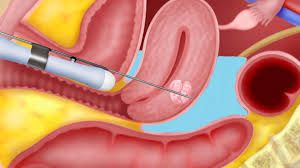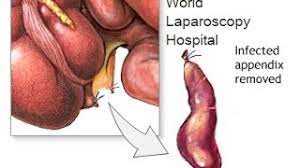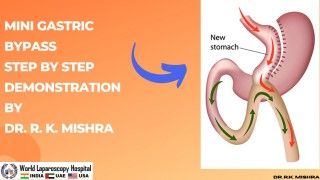Comprehensive Umbilical and Paraumbilical Hernia Surgery for Optimal Recovery
Add to
Share
2,283 views
Report
2 years ago
Description
Umbilical and paraumbilical hernias are common conditions that occur when there is a weakness or defect in the abdominal wall, allowing abdominal contents to protrude through the belly button (umbilicus) or the surrounding area. These hernias can cause discomfort, pain, and cosmetic concerns for patients. Fortunately, modern surgical techniques offer effective solutions for restoring abdominal strength and promoting optimal recovery. Umbilical and paraumbilical hernia surgery aims to repair the hernia and strengthen the weakened abdominal wall. The surgical approach may vary depending on the size and complexity of the hernia, as well as the patient's overall health. However, the primary goals remain consistent: alleviate symptoms, prevent complications, and provide long-term abdominal integrity. One of the key considerations in hernia surgery is the choice of surgical technique. Traditional open surgery involves making an incision near the hernia site, allowing direct access to the hernia sac for repair. While effective, open surgery may result in larger incisions, increased post-operative pain, and longer recovery times. In recent years, minimally invasive techniques such as laparoscopic and robotic-assisted surgery have gained popularity for umbilical and paraumbilical hernia repair. These approaches offer several advantages over open surgery, including smaller incisions, reduced post-operative pain, quicker recovery, and improved cosmetic outcomes. Minimally invasive surgery involves the use of specialized instruments and a small camera (laparoscope) inserted through tiny incisions, allowing the surgeon to repair the hernia from within the abdomen. During the surgery, the hernia sac is carefully dissected and returned to its proper position, and the weakened abdominal wall is reinforced. This reinforcement is typically achieved using synthetic mesh, which acts as a scaffold to support the repaired area and reduce the risk of recurrence. The mesh is securely anchored to the surrounding healthy tissues, promoting long-term strength and durability. Recovery after umbilical and paraumbilical hernia surgery is generally faster with minimally invasive techniques. Patients typically experience less post-operative pain, require shorter hospital stays, and can resume their normal activities sooner compared to open surgery. However, it is important to follow the surgeon's post-operative instructions, including restrictions on lifting and physical exertion, to allow proper healing and minimize the risk of complications. Patient satisfaction with umbilical and paraumbilical hernia surgery is often high, as these procedures effectively alleviate symptoms and restore abdominal strength. The cosmetic outcome is also a significant consideration, particularly for umbilical hernias, as the repair aims to restore a natural appearance of the belly button. It is crucial to consult with an experienced hernia surgeon to determine the most appropriate surgical approach for umbilical and paraumbilical hernia repair. The surgeon will assess the hernia size, patient's medical history, and overall health to develop a personalized treatment plan. They will discuss the benefits, risks, and expected outcomes of each surgical technique, helping the patient make an informed decision. Umbilical and paraumbilical hernia surgery is a specialized procedure aimed at restoring abdominal strength and addressing hernias that occur around the belly button area. These hernias occur when there is a weakness or defect in the abdominal wall, allowing abdominal contents to protrude through the umbilicus or the surrounding area. This comprehensive surgical approach utilizes advanced techniques to repair the hernia and reinforce the weakened abdominal wall. The surgical procedure can be performed using traditional open surgery or minimally invasive techniques such as laparoscopic or robotic-assisted surgery. The choice of technique depends on factors such as the size and complexity of the hernia, as well as the patient's individual circumstances. During the surgery, the hernia sac is carefully dissected and returned to its proper position, while the weakened abdominal wall is strengthened and repaired. This is typically achieved by utilizing synthetic mesh, which provides support to the repaired area and reduces the risk of recurrence. The mesh is securely anchored to the surrounding healthy tissues, ensuring long-term strength and durability. One of the major advantages of umbilical and paraumbilical hernia surgery is the potential for improved cosmetic outcomes. By addressing the hernia and reinforcing the abdominal wall, the procedure can restore a natural appearance to the belly button area, enhancing the patient's overall aesthetic satisfaction. Furthermore, minimally invasive techniques offer additional benefits such as smaller incisions, reduced post-operative pain, shorter hospital stays, and faster recovery times compared to traditional open surgery. Patients undergoing minimally invasive hernia repair can experience a quicker return to their normal daily activities and enjoy a smoother recovery process. To ensure optimal outcomes, it is crucial to consult with a skilled hernia surgeon who specializes in umbilical and paraumbilical hernia repair. The surgeon will assess the individual case, taking into consideration factors such as the hernia size, patient's medical history, and overall health. They will then develop a personalized treatment plan, discussing the available surgical techniques, expected outcomes, and potential risks involved. In conclusion, umbilical and paraumbilical hernia surgery offers an effective solution for addressing these common hernias and restoring abdominal strength. Whether through traditional open surgery or minimally invasive approaches, the procedure aims to repair the hernia, reinforce the weakened abdominal wall, and provide long-term support. Consulting with an experienced hernia surgeon ensures comprehensive care and helps patients achieve optimal recovery and improved quality of life.
Similar Videos






